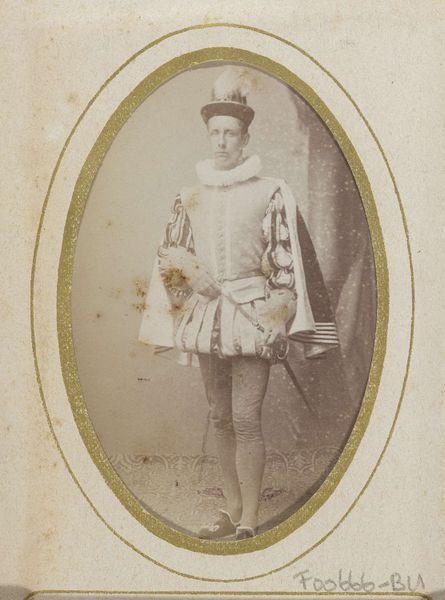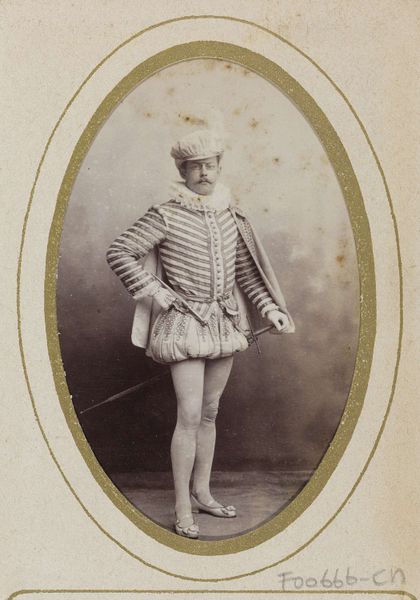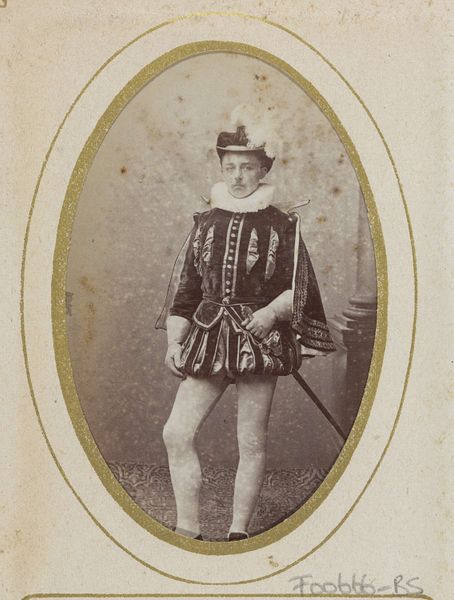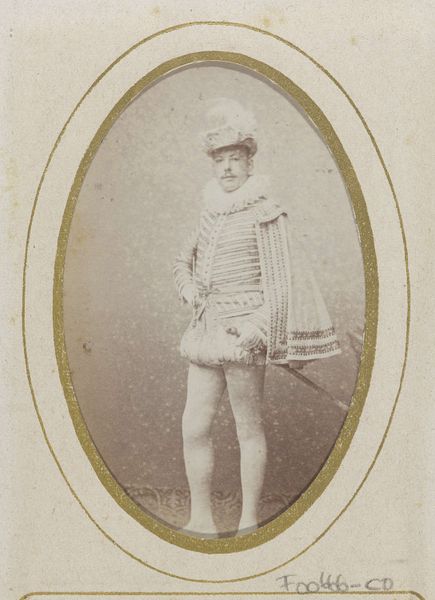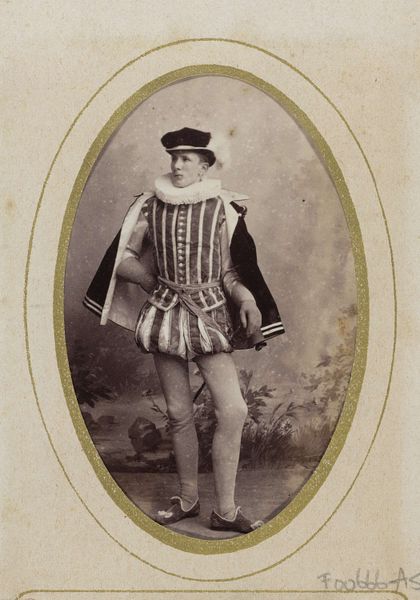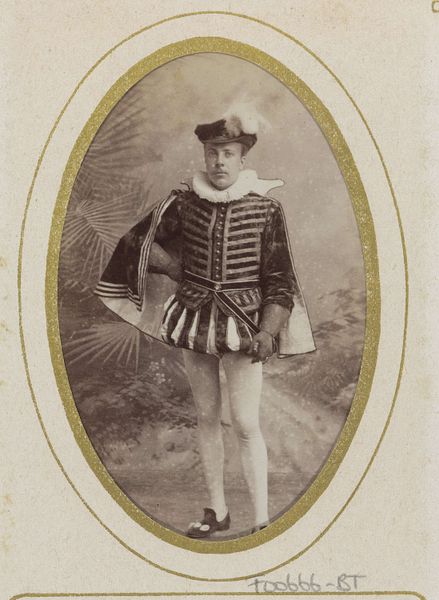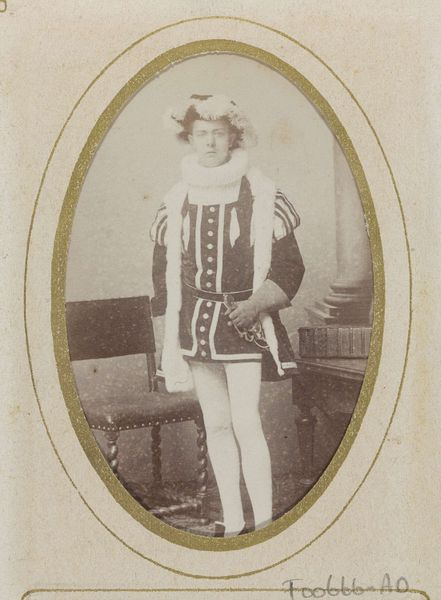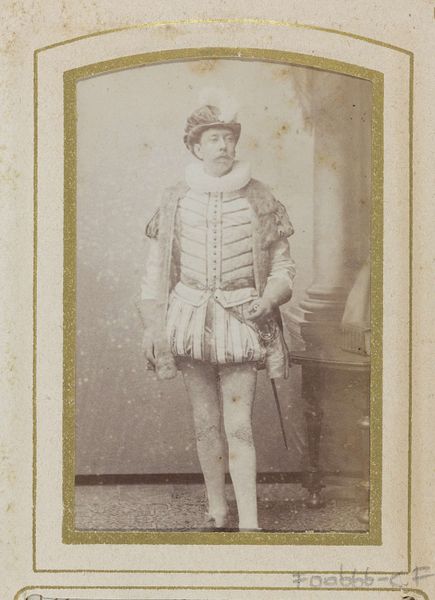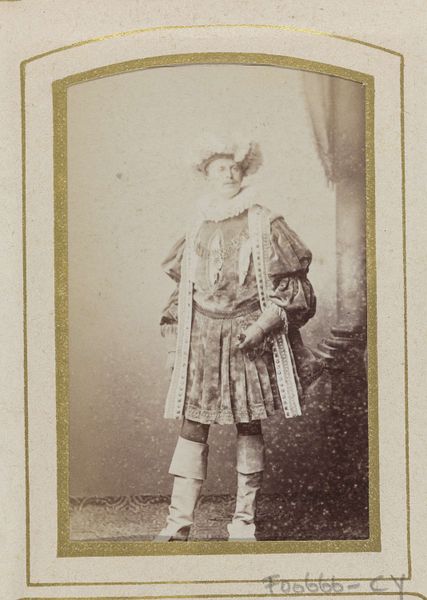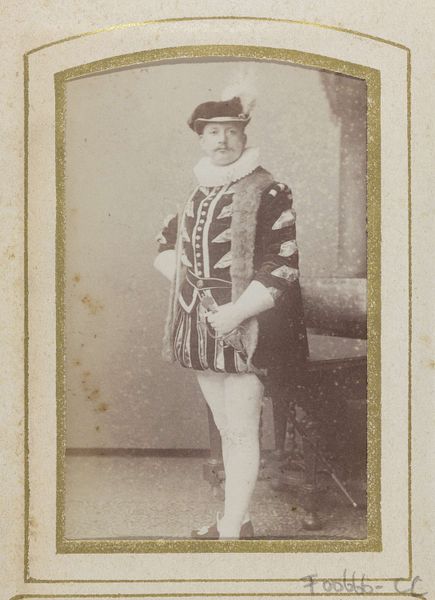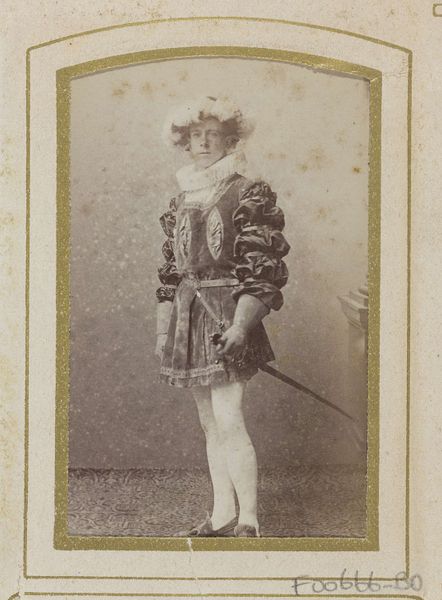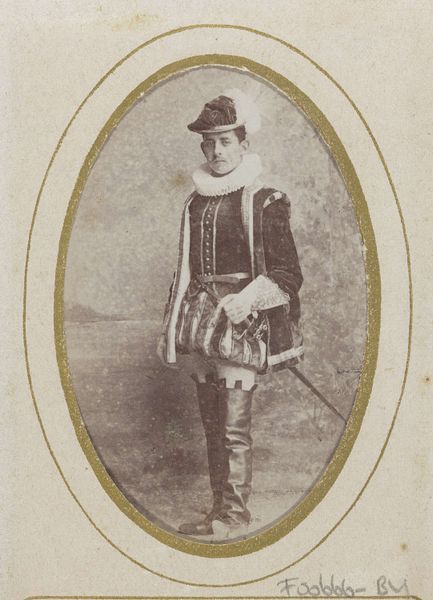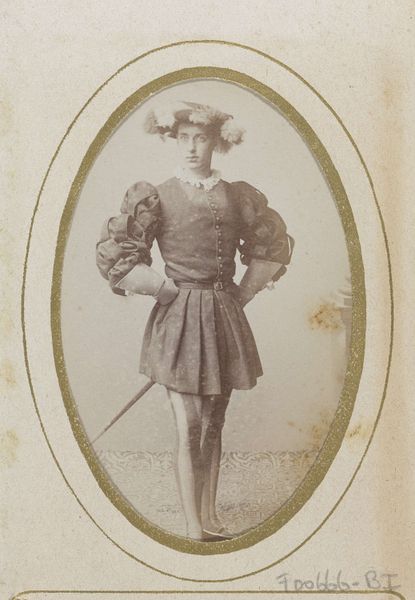
Portret van een jonge man in kostuum met degen, aangeduid als E.H. Winkelman 1860 - 1905
0:00
0:00
Dimensions: height 83 mm, width 52 mm
Copyright: Rijks Museum: Open Domain
Curator: Here we have a photographic portrait from between 1860 and 1905, entitled "Portrait of a Young Man in Costume with a Sword, Referred to as E.H. Winkelman," by Jan Goedeljee. Editor: The faded sepia tones lend an air of melancholic elegance, don't you think? He seems caught between worlds, his elaborate attire juxtaposed with the photograph's inherent honesty. The visible photography inscription further breaks that boundary between class and its presentation. Curator: Indeed. These photographic portraits gained popularity in the mid-19th century as a way for individuals, especially the burgeoning middle class, to participate in traditions previously reserved for the elite. It is interesting that Winkelman is mentioned in the work's title, since that may reveal some aspirations toward aristocracy. Editor: Notice the textures though, especially in his doublet and hose! We see this combination of flat cloth, along with the ruffles at his joints. I can only imagine how the materials of that costume impacted his pose, restricted his movements, altered his performance for the camera. Curator: Right, photography democratized image production, making portraits more accessible, while studios like Goedeljee's played a key role in shaping visual culture. It allowed those who were never destined for high societal positions to fantasize and publicly declare otherwise. The very creation of this image makes Winkelman visible in new social contexts. Editor: It's compelling to consider the role that his costuming may have been an artistic choice versus the sitter's choice. Regardless, it affects the historical reading of this person, even today. Was the sword a prop? I also wonder, who were these photo studios working for? Curator: Certainly, this image is a lens through which we can understand broader historical and social currents – from shifting class dynamics to the rise of photographic representation and romanticism's taste for nostalgic aesthetics, including its connection to nationalism through re-imaginings of an idyllic, bygone past. Editor: And considering how readily photography became available, one starts to see an intentional construction around class and cultural boundaries. Fascinating how an aesthetic impulse became a mark of commerce.
Comments
No comments
Be the first to comment and join the conversation on the ultimate creative platform.
